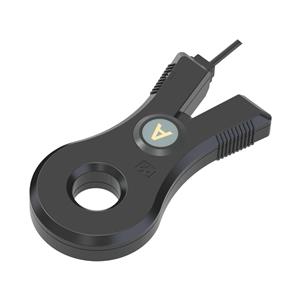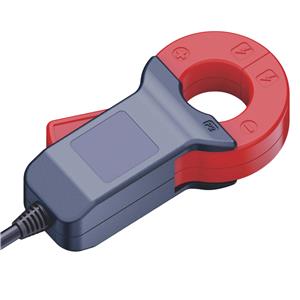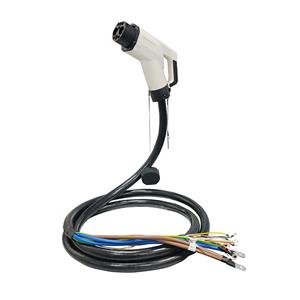News
In order to increase the cohesion of the company's employees, strengthen their sense of belonging, and promote employees' understanding and communication, so that each employee can truly feel the warmth of the big family of China Science and Technology after stressful work, the company organized employees with the theme of "Thanksgiving for you" Birthday party activities, to celebrate the birthday of employees in November, share happy moments!
-
2808-2025
GELAN Electric Launches Next-Gen 1P&3P Meter Terminal Block for Smart Grid Modernization
Shenzhen, China – August 23, 2025 – GELAN Electric, a leading innovator in electrical components, today announced the global launch of its 1P&3P Meter Terminal Block, designed to address the growing demand for reliable and scalable energy metering solutions in smart grids and renewable energy systems.
-
2308-2025
TCL CSOT Launches Mass Production of P1.2 COB Mini-LED Displays, Accelerating Commercialization
TCL CSOT has achieved a critical milestone with the mass production launch of its P1.2-pitch COB Mini-LED displays at its Suzhou manufacturing base. The product, featuring adjustable brightness (0-800 nits) and a 5,000:1 contrast ratio, was completed 15 days ahead of schedule, signaling TCL’s aggressive entry into the competitive LED direct-view market.
-
2308-2025
COB LCD (Chip-on-Board Liquid Crystal Display)
COB LCDs represent a highly integrated display technology where the driver integrated circuits (ICs) are directly mounted and wire-bonded onto the printed circuit board (PCB) behind the liquid crystal layer. This architecture eliminates the need for a separate controller board or external connectors, resulting in an ultra-compact, lightweight, and cost-effective solution. The monolithic design enhances durability by reducing interconnection points, making it resistant to vibration and environmental stressors.
-
2708-2025
SDK24-200-01 200A Miniature Split-Core Current Transformer (CT)
The SDK24-200-01 is a compact, high-performance split-core current transformer designed for non-intrusive AC current measurement in electrical systems. Its innovative split-core architecture allows for rapid installation without disconnecting conductors, making it ideal for energy monitoring, power quality analysis, and equipment protection in commercial, industrial, and utility applications. With a robust design and precision engineering, this CT delivers reliable performance in diverse environments, from smart buildings to renewable energy installations.
-
2508-2025
Industrial PLC Networking: Practical Selection Guide for Three Topologies
High Real-Time: EtherCAT or PROFINET IRT with cycles ≤1ms, ideal for robotic coordination. Cross-Vendor Integration: Modbus TCP (compatible with 90% of industrial devices), though sacrifices real-time performance (10-100ms).
-
2408-2025
Vibration-Resistant Cage Clamp Technology: A Breakthrough in Industrial Reliability
Core Challenge: Traditional screw terminals loosen under high-vibration environments (e.g., rail transit, heavy machinery), causing signal interruptions or equipment failure.
-
0507-2025
Revolutionizing Power Systems Through High-Frequency Magnetics Innovation
Wide-Bandgap Semiconductor Synergy Gallium Nitride (GaN) and Silicon Carbide (SiC) adoption enables: Switching frequencies >1 MHz (vs. traditional 50-100kHz) 20% power density increase in OSWELL's horizontal type transformers Loss reduction from 3.2W to 1.1W @ 500kHz operation
-
0507-2025
Supply Chain Excellence in Power Magnetics
As global demand for switching power solutions surges, the TF-EP13C-5526 addresses both technical and logistical challenges. This CHINA-manufactured High Frequency Transformer combines cutting-edge performance with unmatched supply chain reliability for industrial buyers.
-
3006-2025
EMC Filter Selection Strategies for Global Supply Chains
In an era of component shortages, this RoHS Filter delivers technical excellence while solving procurement challenges through drop-in compatibility and logistical flexibility.
-
3006-2025
CSPV-LAH: Precision Current Sensing Through Closed-Loop Hall Technology
The CSPV-LAH Closed Loop Hall Transducer sets a new benchmark in high-accuracy current measurement for industrial applications. Leveraging magnetoelectric effect sensing, this device measures DC, AC, pulse, and complex irregular waveforms with ≤0.1% linearity while maintaining electrical isolation – critical for safety and signal integrity.
-
2705-2025
Next-Gen TF-EE Transformers Enable 30% Smaller Medical Imaging Systems
The TFEE19-2003-2.3 high-frequency transformer is revolutionizing medical equipment with its unique 12.5:1 turns ratio and 2.3µH leakage inductance. In Shanghai's United Imaging Healthcare MRI prototypes, these components reduced cryocooler power supply sizes by 30% while maintaining 0.02% current regulation accuracy.
-
1705-2025
Breakthrough in High-Frequency Miniature Transformers Redefines Power Electronics
September 6, 2022, marked a paradigm shift as three revolutionary high-frequency miniature transformers (TF-EE16-64056, TF-EE19-2002-12.5, TFEE19-2003-2.3) debuted with standardized 800×800mm dimensions. Engineered for 100kHz-2MHz operating ranges, these transformers reduce core losses by 62% compared to conventional models, enabling 95% energy conversion efficiency even at 125°C ambient temperatures.





